Range and habitat
The common evening brown Melanitis leda is among the most widespread butterfly species, distributed from Africa to Asia and Oceania (Latorre 2018). Moreover, the species can be found in habitats that range from dense forests to open grasslands, and at altitudes from lowlands to up to 2000 meters (Larsen 2005). As a result, it encounters a wide variety of climates to cope with, backgrounds to blend in with, and predator communities to defend against.
Larvae feed on grasses, adults on fruit
This wide geographic range is probably facilitated by its ability to use a wide variety of grass species as host plant Molleman et al. 2022 so that it will be able to find suitable host plants almost anywhere. It feeds on rotting fruit as adults, which makes them easy to collect using fruit-baited traps (Contribute).
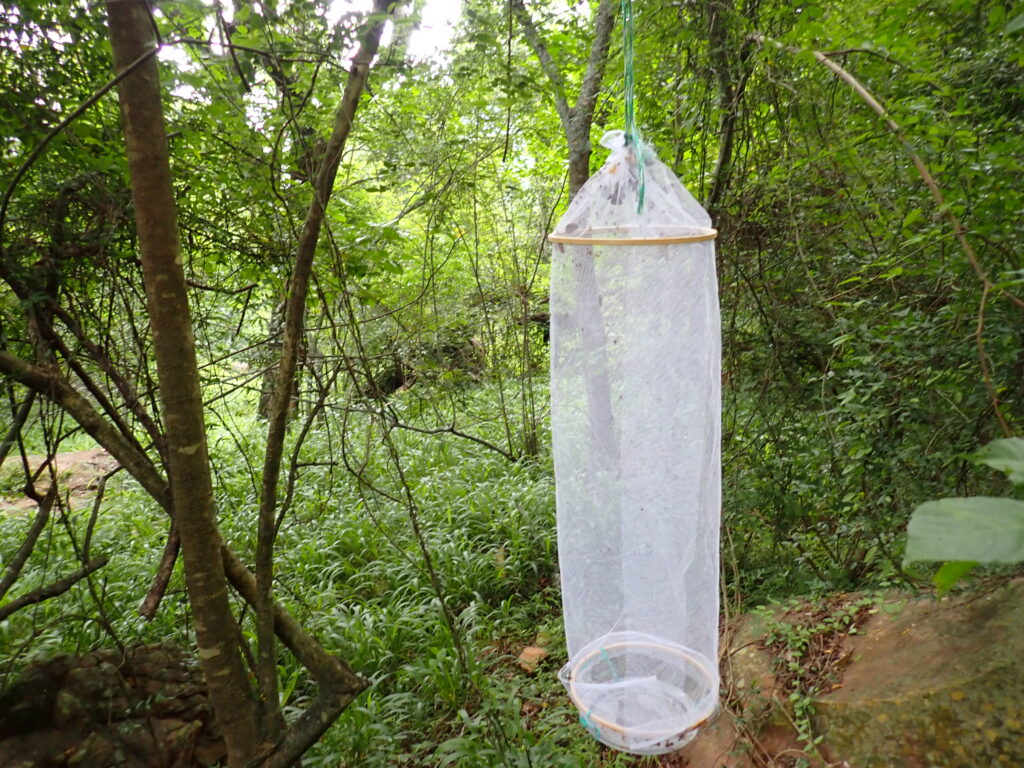
Seasonal forms
M. leda displays seasonal phenotypic plasticity where wet season forms have large and contrasting eyespots, while dry season forms have small eyespots and display most of the polymorphism.
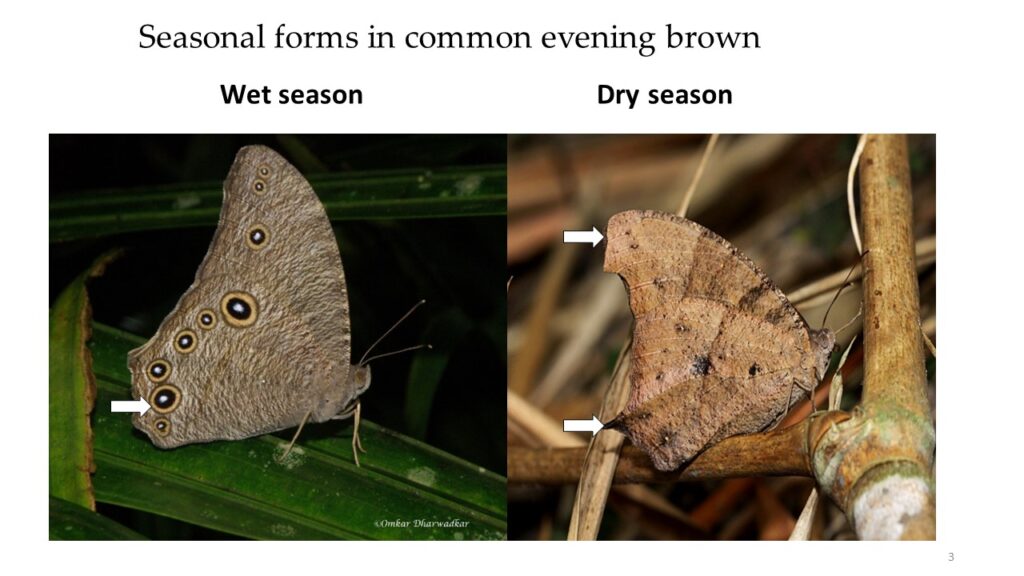
Eyespots have been shown to help these butterflies survive lizard attacks Halali et al. 2019. Dry season forms also have more falcate forewing tips and longer hindwing tails Brakefield 1987. Our project will provide more insight into how the environment induces the seasonal forms in this species Halali et al. 2016 poster.
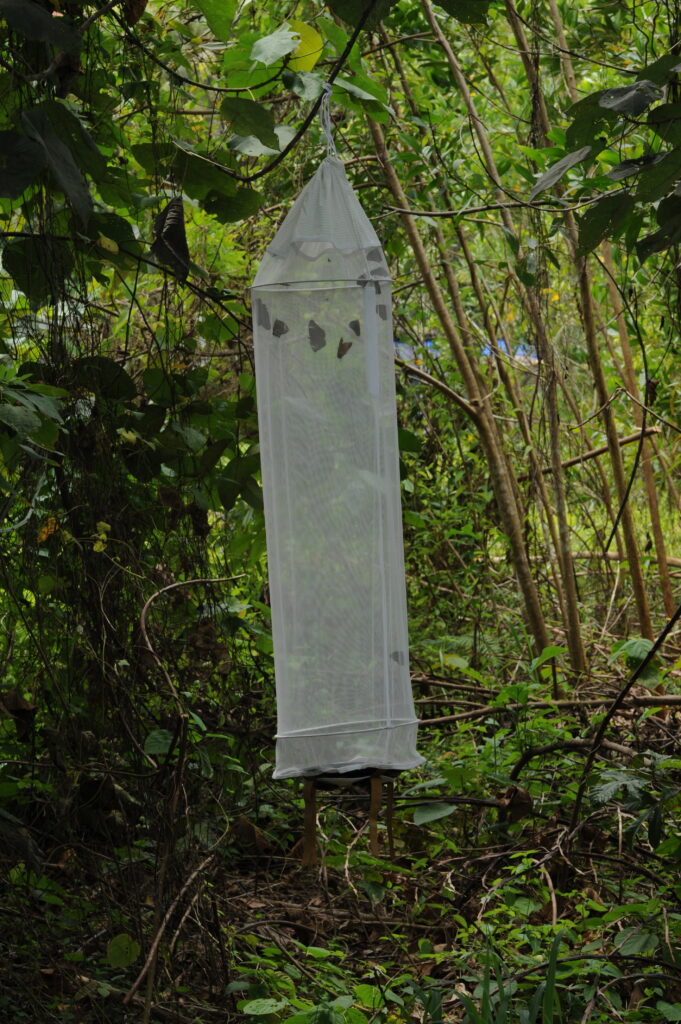
Polymorphism
The variation among dry season morphs of M. leda represents one of the most multi-faceted polymorphisms in wing coloration found in any animal (Ruiter & Brakefield 1994). Some colors as well as more contrasting patterns appear more common in males than in females (BSc thesis of Granados-Tello 2021), which might be due to males spending more time in woody microhabitats, while females venture out to look for grasses. The wider range in colorations found in India than in Africa in our preliminary study might be due to a lower degree of genetic variation in Africa than in India, or relaxed apostatic selection in the African populations resulting from lower abundances (Granados-Tello 2021). The polymorphism in wing patterns allow us to measure many phenotypic traits that could be involved in local adaptation. Polymorphism can also be linked to genomic imprints of apostatic selection.
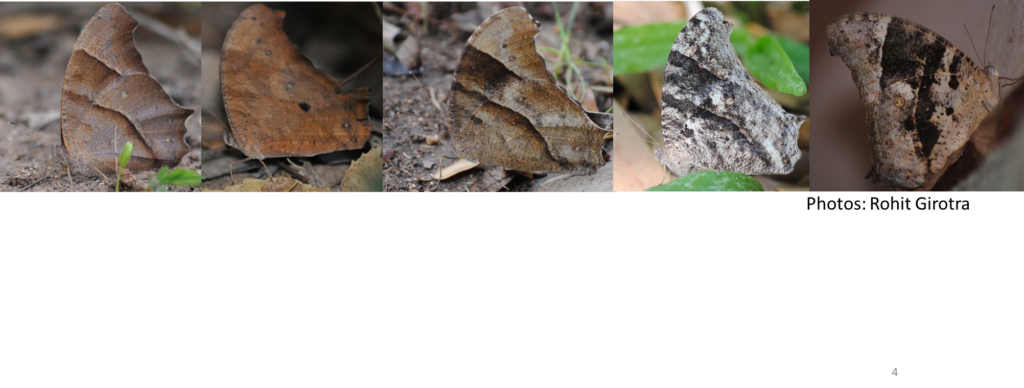
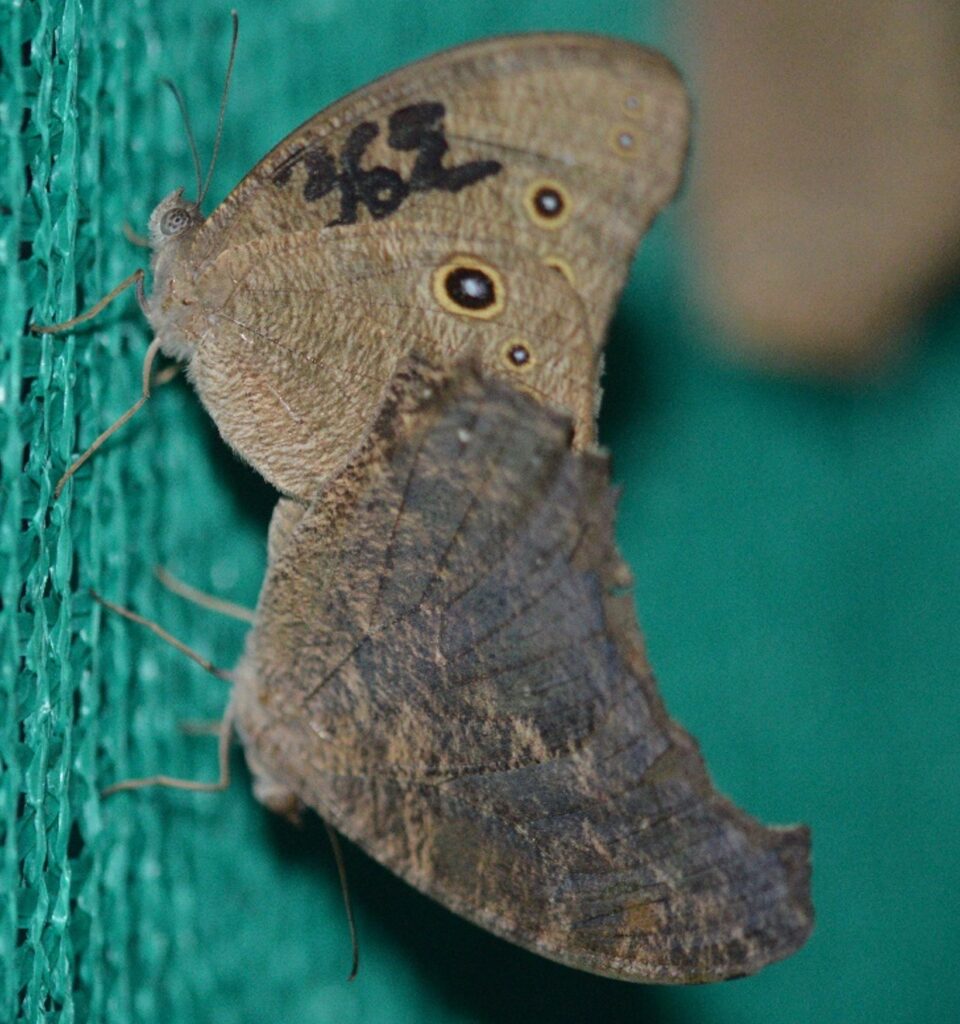
Mating behaviour
M. leda butterflies are known for their mating around sunset, where males defend territories at the forest edge (Kemp 2003). While some authors claim that this is limited to evenings, in India, mating behavior also occurs during sunrise, although not as vigorously (Molleman et al. 2022). More data from different populations are needed to test if populations differ in their timing of mating behavior. The duration of mating is another unusual feature: many couples appear to fall asleep when they mate during the evening, and only uncouple when sunrise is approaching (Molleman et al. 2022).